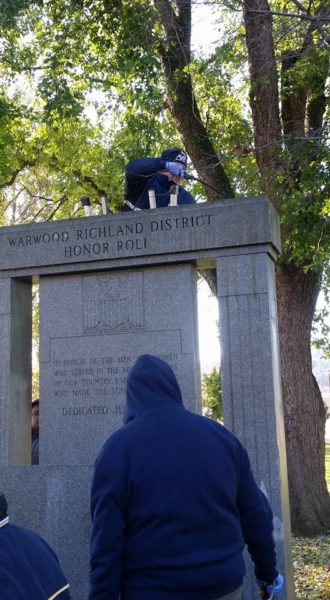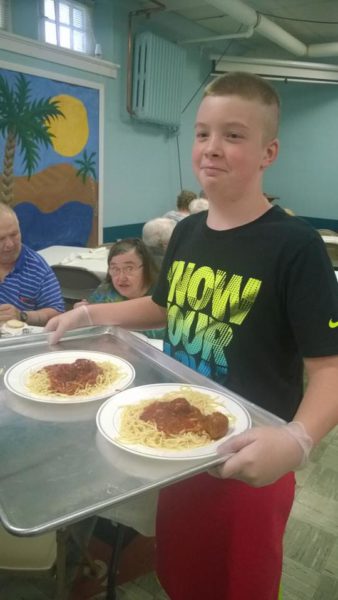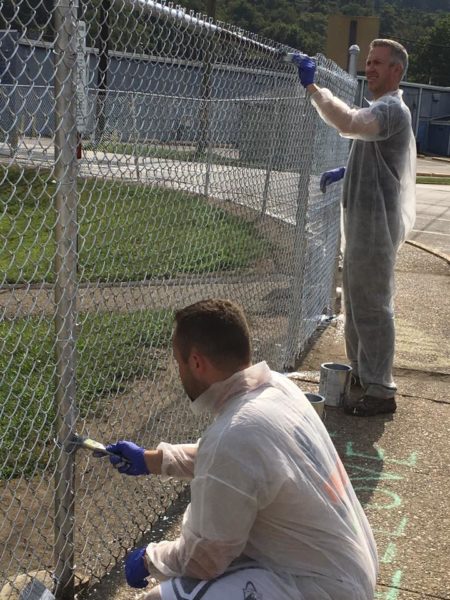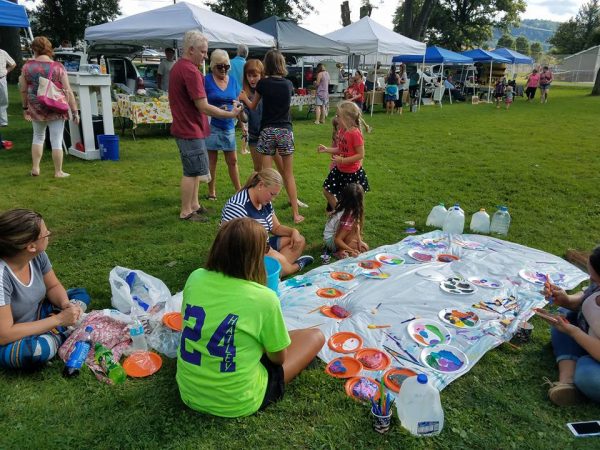Editor’s Note: We believe that our community should be honest, open-minded and willing to engage in a civil dialogue about the issues facing our community, both present and future. The IDEAS page is our place for public opinion, a place where a person can express what concerns them about present-day Wheeling. However, there is one major caveat. The author must propose their resolution to the problem. The essay below meets this test.
It’s hard to live in 2018 and not be reminded of how great things were “back in the day.” Now, in my late 30s, I find myself using that phrase with more regularity than I feel comfortable — a true sign of aging. With all the improvements in technology, we’ve become blessed with the ability to do more with less time; still, we never feel we have enough time to do what is required of us.
I’ve spent the last six years working and living back in the hometown that raised me, and I have fallen in love with that feeling of community. Yet, when you poll the vast majority of neighbors, co-workers, friends and citizens, you hear that community is on the decline.
I think of community as an ideal — not a physical location or a grouping of geographical neighbors. Community is what we strive for — in short, that “Mayberry” feel — feeling safe in a thriving community that is looking out for one another. Many will point the finger at the lack of strong parenting, the opioid epidemic or our political tribalism as causes for the decline in community, and although all of these have put strains on our community, there’s a cause that few identify.
I think of community as an ideal — not a physical location or a grouping of geographical neighbors. Community is what we strive for — in short, that “Mayberry” feel — feeling safe in a thriving community that is looking out for one another.
The last several years, I have been working intimately with a number of service, community and professional organizations. I am proud to be active in each of the organizations for which I am a member, and the challenges of the organizations are all very similar. The true decline of community starts with the decline of community and service organizations — or to put a sharper point on it — the decline of volunteerism.
Many organizations will cite a lack of membership as a limiting factor in accomplishing more. There is no shortage of great ideas, and many organizations have even found “smarter not harder” ways of fundraising; yet, money is not useful to an organization without active volunteers to execute projects and spend the money in the communities they serve. In 2015, in response to the neighborhood surveys conducted by the City of Wheeling, a few residents started a community “do good” organization appropriately named Grow Warwood Pride. Our vision was to start at the root of the problem — re-instilling pride in our communities and addressing and preventing problems like littering, vandalism, etc. In short, people take care of what they value, and other problems like crime, drugs, etc. are minimized when people know that we look out for one another, care about our community deeply and work to protect it adamantly. In our three years, we have accomplished a tremendous amount, but the depth of the projects we tackled have been minimal compared to the extent of our imagination.

So why are organizations hurting for volunteers? In my opinion, it isn’t a lack of recruiting. Organizations work diligently to be inviting to others and have values that align with a clear majority, but in talking with prospective members, many suggest time is a scarce commodity. The lack of time, conversely, doesn’t affect many from being negative on social media, complaining about the state of their community and wishing for how things were “back in the day.” I know that our efforts are felt and appreciated only by the number of emojis and thumbs up we receive on Facebook; I have found myself saying we appreciate the thumbs up, but we could accomplish way more with both hands.
Things were how they were “back in the day” largely in part to the efforts of members of the community rolling up their sleeves and pitching in for the good of the collective whole. Truthfully, it does feel as if life moves at light speed now as we are all pulled in more directions with our jobs and our families, but do we not have an obligation to pull our weight for the good of community as well? Anything worthwhile requires work. Establishing community requires work.
Moreover, it is disheartening to organize efforts for community improvement or any number of causes and have little to no help or attendance. Those who do spend their time working for the good of organizations often run themselves to physical and mental exhaustion trying to do everything. The lack of volunteers causes a strain on the few people who do pitch in time and time again. The loyal volunteers in most organizations work tirelessly to juggle work, home and extracurricular needs on little sleep and lots of caffeine, but what if every person took up one cause? What if every person dedicated one hour a week to a community/service organization, charity, church or school?
One presentation I remember seeing in college spoke of dedicating 15 minutes a day to a goal or dream. If each of us spent 15 minutes a day on that goal, it would amount to almost two hours of improvement in a week’s time. Isn’t the community that you belong to worth 15 minutes a day for improvement and upkeep? How many of us can honestly say we haven’t wasted that much time on Facebook/Twitter/Pinterest/video games/Netflix/reality TV or some other modern distraction?

Organizations face other problems, too. I would be remiss in saying every organization doesn’t have its fair share of challenges, but many of those problems are overcome with the addition of talents with additional membership. Things like communication, marketing, recruiting, grant writing are being done by people who are trying because no one else has stepped up with the knowledge. Those volunteers who are willing to try anything for the good of the organization are admirable because they keep the organization from totally drowning, but efficiency suffers. We could be doing so much more with the right people being called upon to utilize their skill set.
Those modern luxuries mentioned above have made improvements in life in so many ways. We can feel more connected with people on the other side of the world while at the same time feeling disconnected from our community and our neighbors. We argue extensively in online forums with strangers about politics, religion or any number of hot-button topics, but cannot be bothered to pitch in to improve the community we live in. We lose touch with the people around us online instead of knowing them as the people they truly are — sons, daughters, mothers, fathers and more, all with a shared interest to live in a safe community. If we get out from behind the screen and out into the community, we’d get to know our neighbors. We would be communicating about concerns and working toward a stronger community in a positive way instead of ranting on social media with no hope of improving the community.
Additionally, volunteerism NOW has a lasting effect LATER. There’s no minimum age to participate either. What if helping the community you reside in could be a lesson to your children about volunteerism and pride? What you do or say is being emulated by our children; why not do good and have them emulate good? It is our responsibility to leave our community in good condition for our children, and part of that is in raising our children to understand the importance of community service.

For those who feel hopeless with the amount of work that needs to be done in our communities, use your volunteerism as a signal to others, particularly our local and state government officials, that we care about our community. I have to believe that our government officials would prefer to use resources in communities that are willing to roll up their sleeves and pitch in to improve their neighborhoods because they are going to APPRECIATE and MAINTAIN those areas.
This call to action isn’t all work and no play though. There is a silver lining to volunteerism — satisfaction for a job well done, appreciation from the community and improvements in your community that have a lasting impact for future generations who deserve to grow up in the Mayberry community that you remember living in as a child. Furthermore, you get to spend time with likeminded people who will likely become good friends.
Take time out of your busy schedule; your community is worth it! Donate an hour a week or 15 minutes a day to help a community organization, church, school or a cause that could really use your help. I promise you’ll be rewarded for your deeds. To those who are already doing great work and sacrificing time and sleep to help, thank you from all those you serve. We appreciate your time as it is more precious than your money to most organizations. When that new member presents him/herself, don’t forget to welcome them into the group and be open to new ways of thinking and working. We must change if we wish to grow and flourish.

Community: a culmination of communication and unity. Get out from behind your computer/tablet/phone and start talking to real people instead of avatars. Use technology to improve community not corrode it. When we serve our community well, we build a community for life.
• Matt Rafa s a pharmacist serving the Warwood community for six years. He is the employed pharmacy director for the West Virginia Pharmacy Association, vice president of the Warwood Lions Club, a founder of Grow Warwood Pride, market chair of the Warwood Farmers Market and vice president of programs for the Boy Scouts Ohio River Valley Council. He has served each of these organizations for a combined 17 years.


